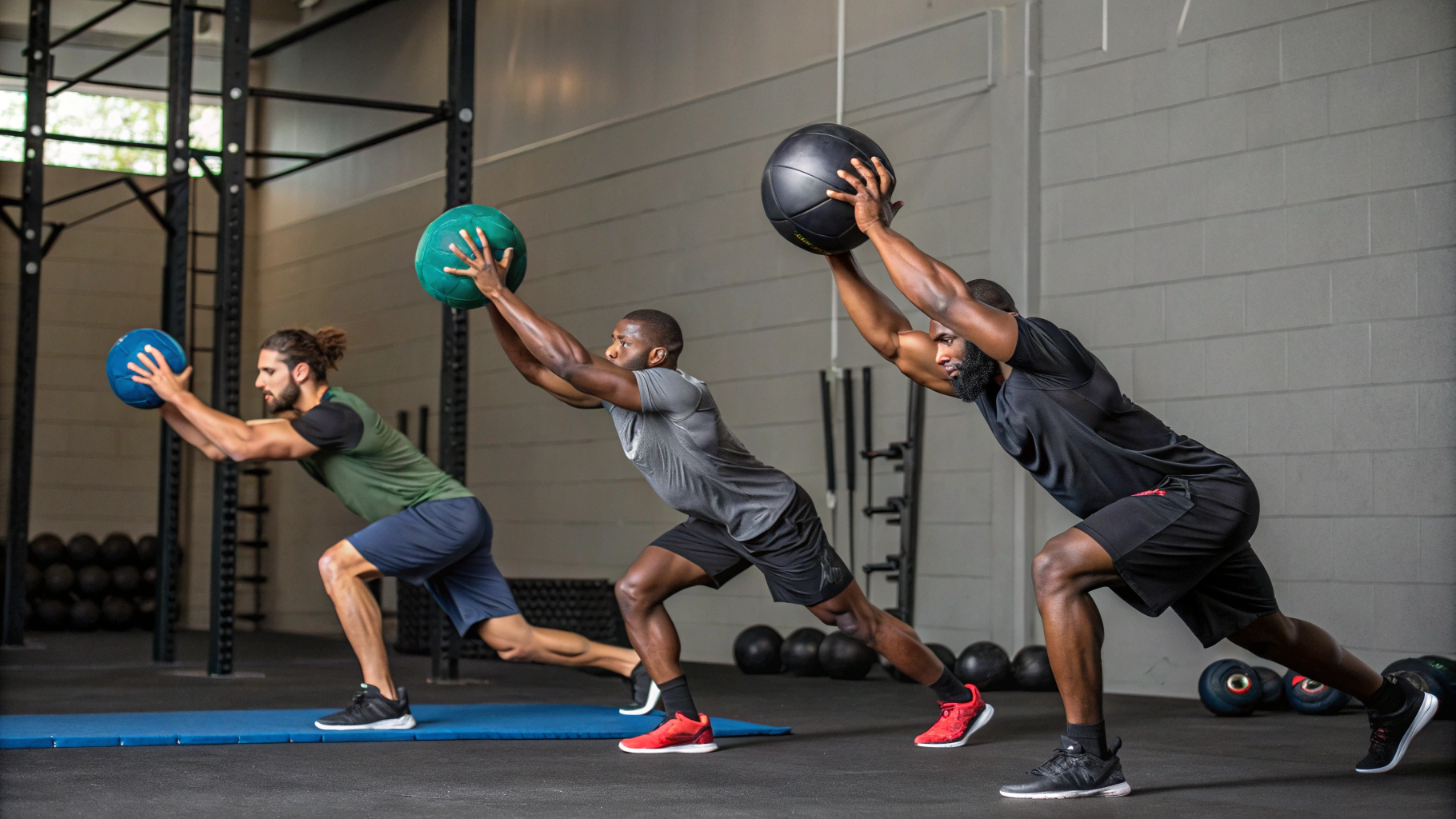This comprehensive guide delves into the '3-Med Ball Throws for Acceleration and Quickness' training methodology, ideal for athletes seeking to enhance their speed and agility. From understanding the skill's significance in sports to mastering technical components and avoiding common errors, this guide provides a structured approach to employing med ball throws effectively. Whether you are a beginner or an advanced athlete, this guide will address the progression paths, include coaching points, and offer insights into integrating these drills into your overall training program.
Skill Overview
- Importance in Sport: Med ball throws are crucial for developing acceleration and quickness, a vital component in sports such as basketball, soccer, and track and field.
- Key Components: This training focuses on force production, plyometric capabilities, and core strength to improve explosive power.
- Athletic Requirements: Athletes should possess a baseline level of coordination, core stability, and upper/lower body strength.
- Application Scenarios: Suitable for sports where change of direction, sprinting speed, and power are integral to performance.
Technical Components
- Fundamental Mechanics: Emphasizes the kinetic chain from lower to upper body, efficient energy transfer, and balanced stance.
- Key Movement Patterns: Include rotational movements, vertical and horizontal throws to simulate sport-specific actions.
- Sport-Specific Applications: Track athletes can improve starting speed, while soccer players enhance quick lateral movements.
- Performance Indicators: Success can be measured by increased throw distance, speed, and improved coordination.
Drill Progression
| Level | Description |
|---|---|
| Beginner Drills | Focus on basic mechanics with exercises like chest passes and overhead throws. Emphasize form and stability. |
| Intermediate Exercises | Integrate movements such as rotational throws and forward slams that increase core engagement and coordination. |
| Advanced Training Methods | Include complex drills like lateral throws with added footwork, enhancing reactive speed and multi-directional agility. |
Training Implementation
- Practice Frequency: Recommended 2-3 times per week for optimal development while allowing recovery.
- Integration with Other Training: Can be combined with plyometrics, resistance training, and sport-specific drills.
- Season-Specific Modifications: Tailor intensity and volume according to in-season or off-season schedules.
- Performance Metrics: Track progress through metrics like throw distance, speed improvements, and agility test scores.
Common Mistakes
- Technical Errors: Poor stance, improper form in throw execution.
- Training Mistakes: Over-reliance on med ball training, neglecting other facets of athletic development.
- Correction Strategies: Utilize video feedback, focus on drills that reinforce technique corrections.
- Prevention Tips: Ensure proper warm-up, use appropriate ball weight, and maintain focus on technique.
Coaching Points
- Key Teaching Cues: Emphasize explosive movements, keep balance, engage core.
- Observation Guidelines: Watch for signs of fatigue, ensure full-body coordination.
- Feedback Methods: Employ verbal cues, visual demonstrations, and personalized feedback.
- Progress Markers: Look for improvements in power output, precision in execution, and athlete confidence.
In conclusion, the '3-Med Ball Throws for Acceleration and Quickness' training is an effective component within an athlete's regimen, designed to enhance speed and agility through structured drills and technical precision. By understanding the underlying principles and implementing structured progression and integration, athletes can see substantial improvements in performance. Coaches and athletes should remain mindful of common pitfalls and utilize the outlined coaching cues for optimum results, ensuring athletic development and injury prevention.











 浙公网安备
33010002000092号
浙公网安备
33010002000092号 浙B2-20120091-4
浙B2-20120091-4